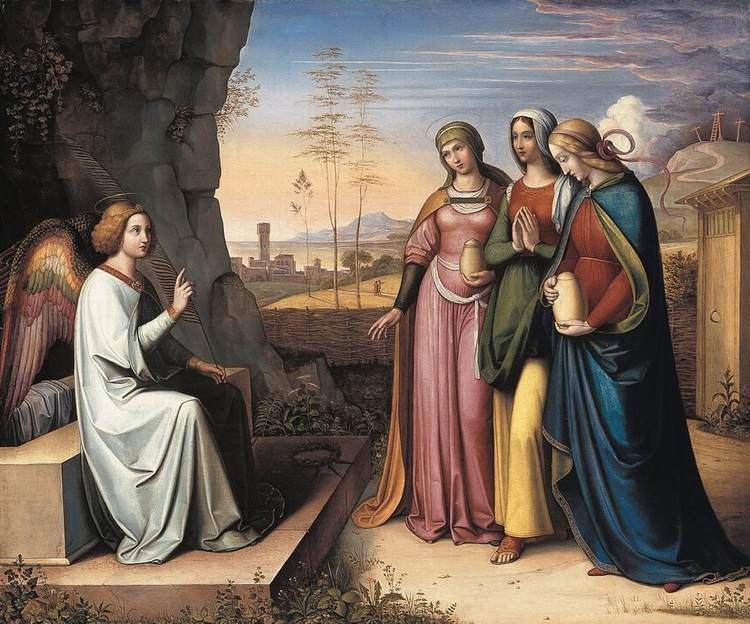 | ||
Lcaoineadh na dtr muire the lament of the three marys iarla o lionaird
The Three Marys or Maries are three pious Christian women mentioned in the New Testament, all of whom were, or have been considered by tradition to be, named Mary, which was a very common name for Jewish women of the period.
Contents
- Lcaoineadh na dtr muire the lament of the three marys iarla o lionaird
- Caoineadh na dtr muire the lament of the three marys
- The three Marys at the tomb
- Women at the tomb in art
- Legend in France
- Processional statues during Good Friday
- The three Marys at the crucifixion
- The three daughters of Saint Anne
- Other interpretations
- References
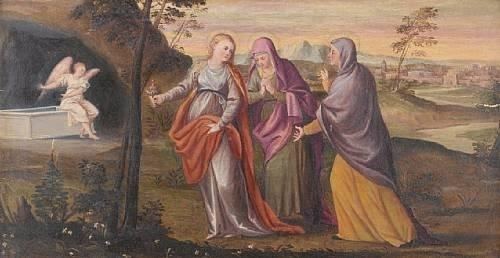
The New Testament gives the name Mary to several women, some of whom have at times been thought to be the same person.
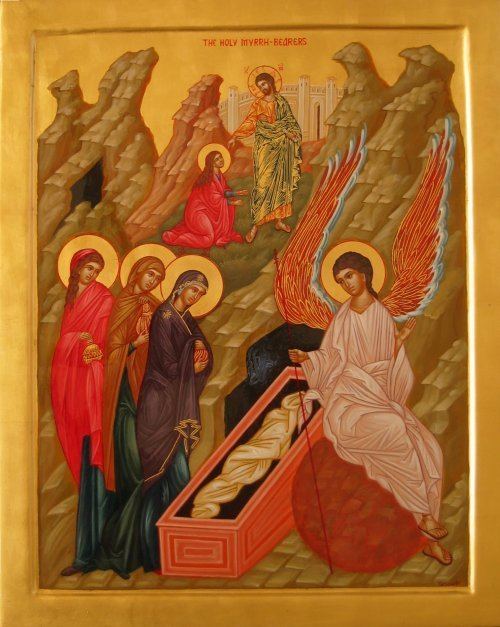

Different sets of three women have been referred to as the Three Marys:
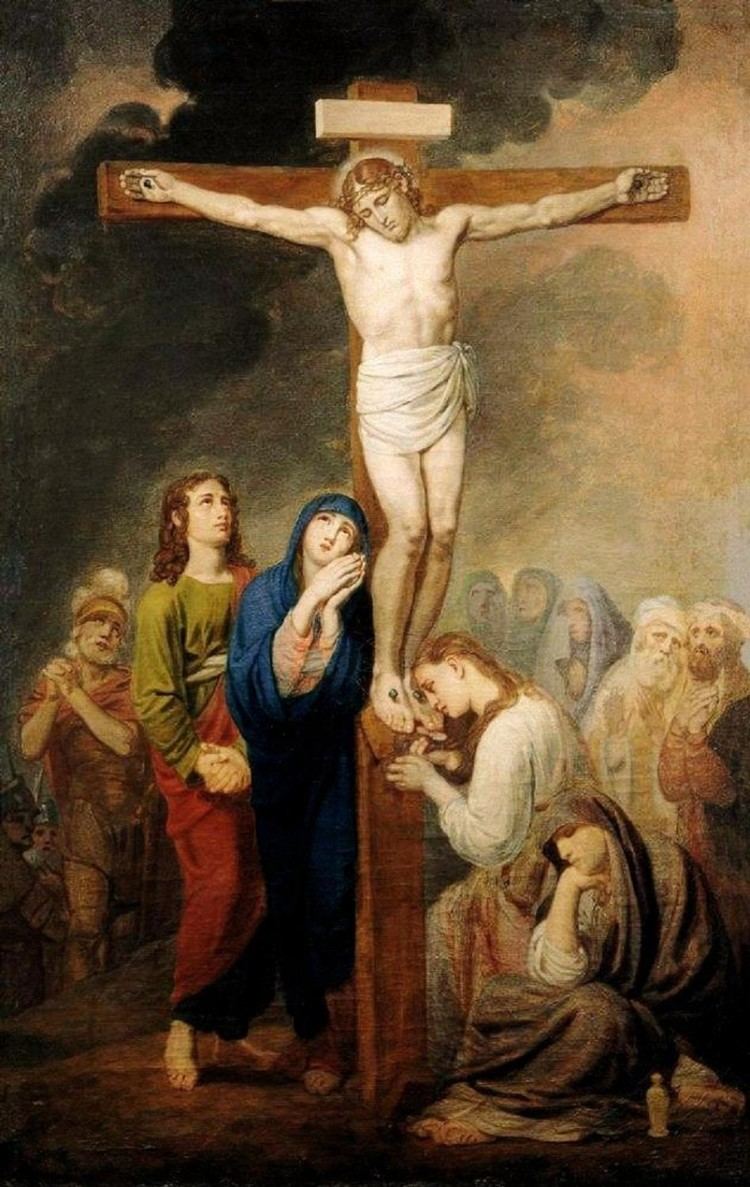
Caoineadh na dtr muire the lament of the three marys
The three Marys at the tomb
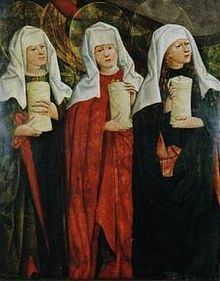
This name is used for a group of three women who came to the sepulchre of Jesus. In Eastern Orthodoxy they are among the Myrrhbearers, traditionally including a much larger number of people. All four gospels mention women going to the tomb of Jesus, but only Mark 16:1 mentions the three that this tradition interprets as bearing the name Mary:
The other gospels give various indications about the number and identity of women visiting the tomb:
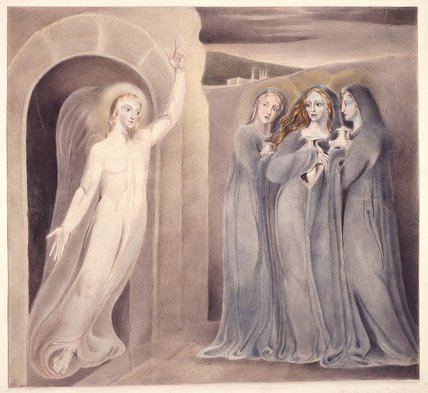
The Roman Martyrology commemorates Mary Magdalene on 22 July. On 24 April it commemorates "Mary of Cleopas and Salome, who, with Mary Magdalene, came very early on Easter morning to the Lord's tomb, to anoint his body, and were the first who heard the announcement of his resurrection.
Women at the tomb in art
What may be the earliest known representation of three women visiting the tomb of Jesus is a fairly large fresco in the Dura-Europos church in the ancient city of Dura Europos on the Euphrates. The fresco was painted before the city's conquest and abandonment in AD 256, but it is from the 5th century that representations of either two or three women approaching a tomb guarded by an angel appear with regularity, and become the standard depiction of the Resurrection. They have continued in use even after 1100, when images of the resurrection of Jesus in Christian art began to show the risen Christ himself. Examples are the Melisende Psalter and Peter von Cornelius's The Three Marys at the Tomb. Eastern icons continue to show either the Myrrhbearers or the Harrowing of Hell.
Legend in France
A medieval legendary account had Mary Magdalene, Mary of Jacob and Mary Salome, Mark's Three Marys at the Tomb, or Mary Magdalene, Mary of Cleopas and Mary Salome, with Saint Sarah, the maid of one of them, as part of a group who landed near Saintes-Maries-de-la-Mer in Provence after a voyage from the Holy Land. The group sometimes includes Lazarus, who became bishop of Aix-en-Provence, and Joseph of Arimathea. They settled at Saintes-Maries-de-la-Mer, where their relics are a focus of pilgrimage. The feast of the Three Marys was celebrated mainly in France and Italy, and was accepted by the Carmelite Order into their liturgy in 1342.
Processional statues during Good Friday
In various Catholic countries, particularly in the Kingdom of Spain, the Philippines and Latin American countries, images of the three Marys (in Spanish Tres Marías) associated with the tomb are carried in Good Friday processions referred to by the word Penitencia (Spanish) or Panata (Filipino for an act performed in fulfilment of a vow). They carry attributes or iconic accessories, chiefly enumerated as follows:
The Blessed Virgin Mary is not part of this group, as her title as Mater Dolorosa is reserved to a singular privilege in the procession.
A common pious practice sometimes alternates Mary Salome with Jacob, due to a popular belief that Salome, an elderly person at this time would not have had the energy to reach the tomb of Christ at the morning of resurrection, though she was present at the Crucifixion. To date, this remains to be a geographical tradition that varies from one town to another. Another practice pertains to Mary Magdalene is sometimes referred to Mary of Bethany being the same person, in line with the long-standing tradition in Western Christianity that identified Mary Magdalene (probably from Magdala near Lake Tiberias) with Mary of Bethany, a place near Jerusalem, much further south.
The three Marys at the crucifixion
The presence of a group of female disciples of Jesus at the crucifixion of Jesus is found in all four Gospels of the New Testament. Differences in the parallel accounts have led to different interpretations of how many and which women were present. In some traditions, as exemplified in the Irish song Caoineadh na dTrí Muire, the Three Marys are the three whom the Gospel of John mentions as present at the crucifixion of Jesus:
These three women are very often represented in art, as for example in El Greco's Disrobing of Christ, as are other formulations of the women present, for the Gospels other than that of John do not mention Jesus' mother as present and, in place of Mary of Clopas, they speak of Mary of Jacob (Mark and Matthew), Salome (Mark), and the mother of the sons of Zebedee (Matthew).
The three daughters of Saint Anne
According to a legend propounded by Haymo of Auxerre in the mid-9th century, but rejected by the Council of Trent, Saint Anne had, by different husbands, three daughters, all of whom bore the name Mary and who are referred to as the Three Marys:
Mary Magdalene is not part of this group.
This account was included in the Golden Legend of Jacobus de Voragine, written in about 1260.
It was the subject of a long poem in rhymed French written in about 1357 by Jean de Venette. The poem is preserved in a mid-15th-century manuscript on vellum containing 232 pages written in columns. The titles are in red and illuminated in gold. It is decorated with seven miniatures in monochrome gray.
For some centuries, religious art throughout Germany and the Low Countries frequently presented Saint Anne with her husbands, daughters, sons-in-law and grandchildren as a group known as the Holy Kinship.
Other interpretations
The Three Marys by Alexander Moody Stuart, first published 1862, reprinted by the Banner of Truth Trust, Edinburgh, 1984, is a study of Mary of Magdala, Mary of Bethany and Mary of Nazareth.
In Spanish-speaking countries, the Orion's Belt asterism is called Las Tres Marías (The Three Marys). In other Western nations, it is sometimes called "The Three Kings," a reference to the Gospel of Matthew's account of wise men, who have been pictured as kings and as three in number, bearing gifts for the infant Jesus.
